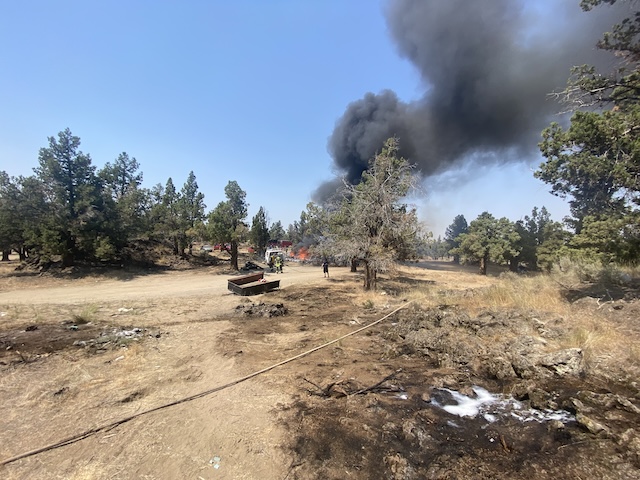Editorial: A tax credit, a trucking company and the importance of government openness
Published 12:00 am Wednesday, November 21, 2018

- 123RF
Confession time.
When we asked the Department of Environmental Quality last month to open the curtain hiding the credit market at the heart of Oregon’s Clean Fuels Program, we expected the stiffest resistance to come from the alternative-fuels industry. The fuel program forces motorists to subsidize green energy producers, and we assumed that the businesses hoovering up all of that public money would have the greatest interest in maintaining secrecy.
Trending
Biofuels producers have, indeed, objected. But the oil industry was the quickest to throw a conniption, led by Chevron U.S.A. After the Department of Justice ordered the release of the records we’d requested, Chevron summoned its lawyers and sued. It even targeted the Bulletin editor who’d requested the documents.
Days later, the Western States Petroleum Association, which represents Chevron and similar companies, asked to join the litigation party. Since then, Iowa-based biofuel giant Renewable Energy Group has sought to intervene as well.
The petroleum industry’s legal onslaught raises a question: Are Chevron and its allies trying to hide something, and if so what?
Fuel importers like Chevron act as glorified tax collectors. The Clean Fuels Program steadily reduces the allowed “carbon intensity” of gas and diesel. To meet the ever-tightening standard, fuel suppliers can blend in low-carbon fuels like ethanol, but when further carbon reduction proves impractical they begin to accumulate deficits.
These can be offset by purchasing credits from biofuel producers, public transit districts and other registered credit generators. The cost, which acts as a hidden tax, gets passed along at the pump.
From an outsider’s perspective, the role of fuel importers seems like it would be fairly humdrum. They sell gas, they calculate their credit deficits, and then they go shopping on the state’s super-secret credit exchange. It’s middleman city, right?
Trending
To read Chevron’s lawsuit, though, you’d think we’d asked to take a peek inside the Manhattan Project. “The timing, volume and pricing for Chevron’s credit transactions is of tremendous economic value to Chevron,” the company claims, and maintaining its secrecy “is essential to Chevron’s competitive business strategies.”
One can’t help but wonder what those strategies are and whether the manner with which Chevron complies with the Clean Fuels Program would surprise, and perhaps dismay, the lawmakers who created it and the motorists who pay for it. Problem is, none of us are allowed to see what Chevron’s doing with the public’s money, and Chevron and its industry allies don’t want that to change.
Chevron, of course, may be doing nothing that would raise an eyebrow. But that possibility, unverified, should comfort no one, as an instructive tale from Oregon’s BETC files illustrates.
The BETC, short for Business Energy Tax Credit, was a similarly well-intended program that gave businesses income-tax breaks to pay for environmentally friendly energy-saving projects.
Among the credit’s most notable beneficiaries is Mesilla Valley Transportation, a trucking company based in … New Mexico. With the help of an Oregon nonprofit, the company discovered that it could collect millions of dollars in tax credits by registering hundreds of its rigs in the Beaver State, where they actually did relatively little driving.
From 2008 to 2009, Oregon approved more than 700 BETC applications filed by Mesilla Valley Transportation with a combined value of about $4.4 million. The company used Oregonians’ money to pay for gizmos like auxiliary power units, which heat and cool truck cabs without help from an idling engine. Mesilla Valley Transportation sold most of its credits to “pass through” partners for about $3.8 million, a program accommodation that allowed companies without Oregon income tax bills to collect subsidies.
The BETC program imploded in spectacular fashion, but its lessons ought to live on. The most important one here is that incentive programs don’t always work as their creators and funders (aka taxpayers) expect. Given the right financial incentives and enough creativity, in fact, some truly shocking things can happen, as Mesilla Valley’s BETC bonanza shows.
Keep in mind that Mesilla Valley collected millions of dollars from Oregon taxpayers despite the fact that the BETC program operated transparently.
This openness allowed two newspapers — The Bulletin and, subsequently, The Oregonian — to investigate the company’s activities and report the results. It was the press, not program regulators, that raised the alarm.
The Clean Fuels Program, like the BETC program, provides a powerful incentive for regulated parties like Chevron to minimize their costs. We have no doubt, meanwhile, that Chevron and other regulated businesses are able to employ plenty of smart people to act upon that incentive, perhaps in ways that might surprise lawmakers and taxpayers.
But unlike the BETC program, the Clean Fuels Program currently operates with the sort of secrecy that keeps reporters, legislators and everyone who pays the cost completely in the dark.
How reassuring.








